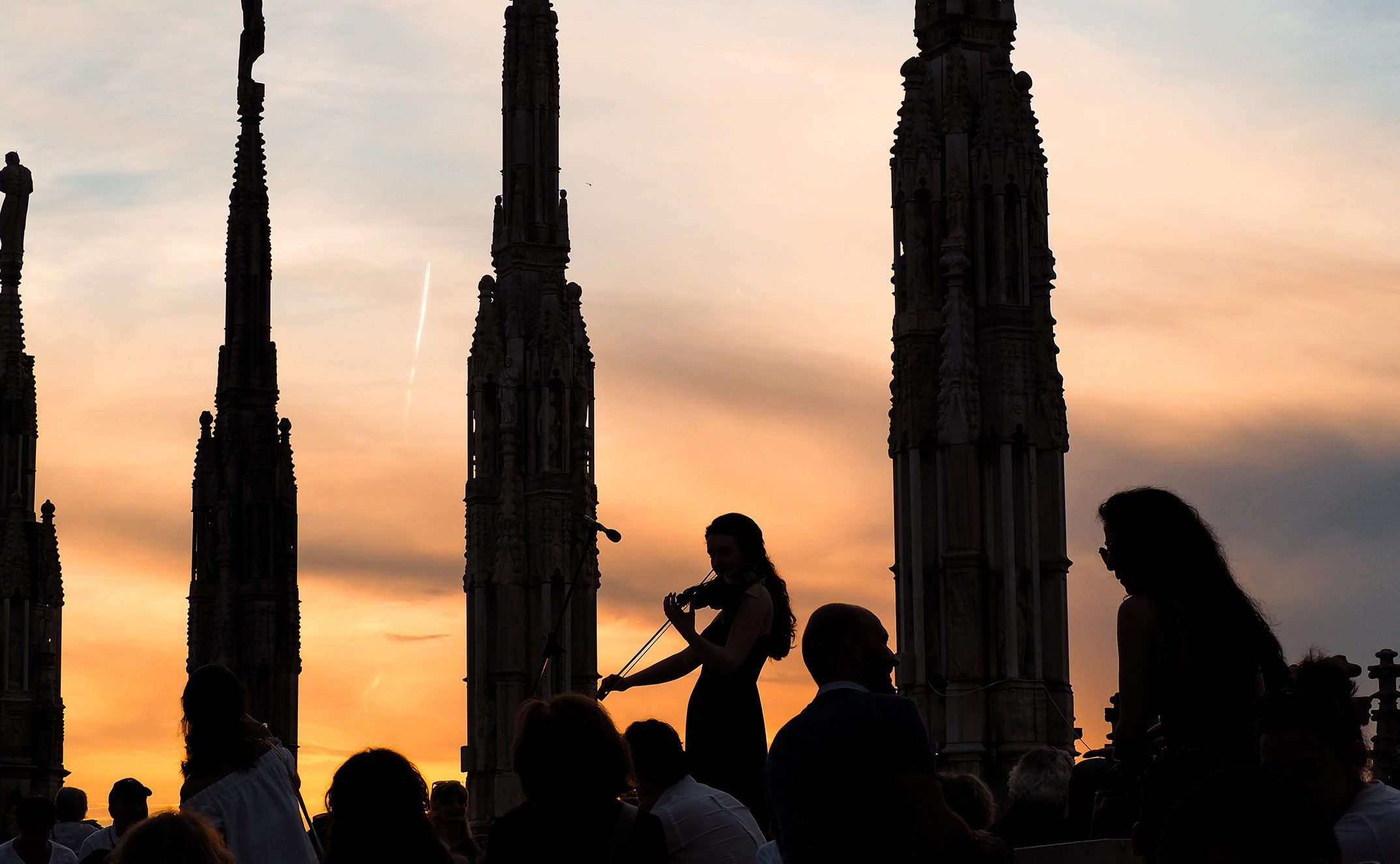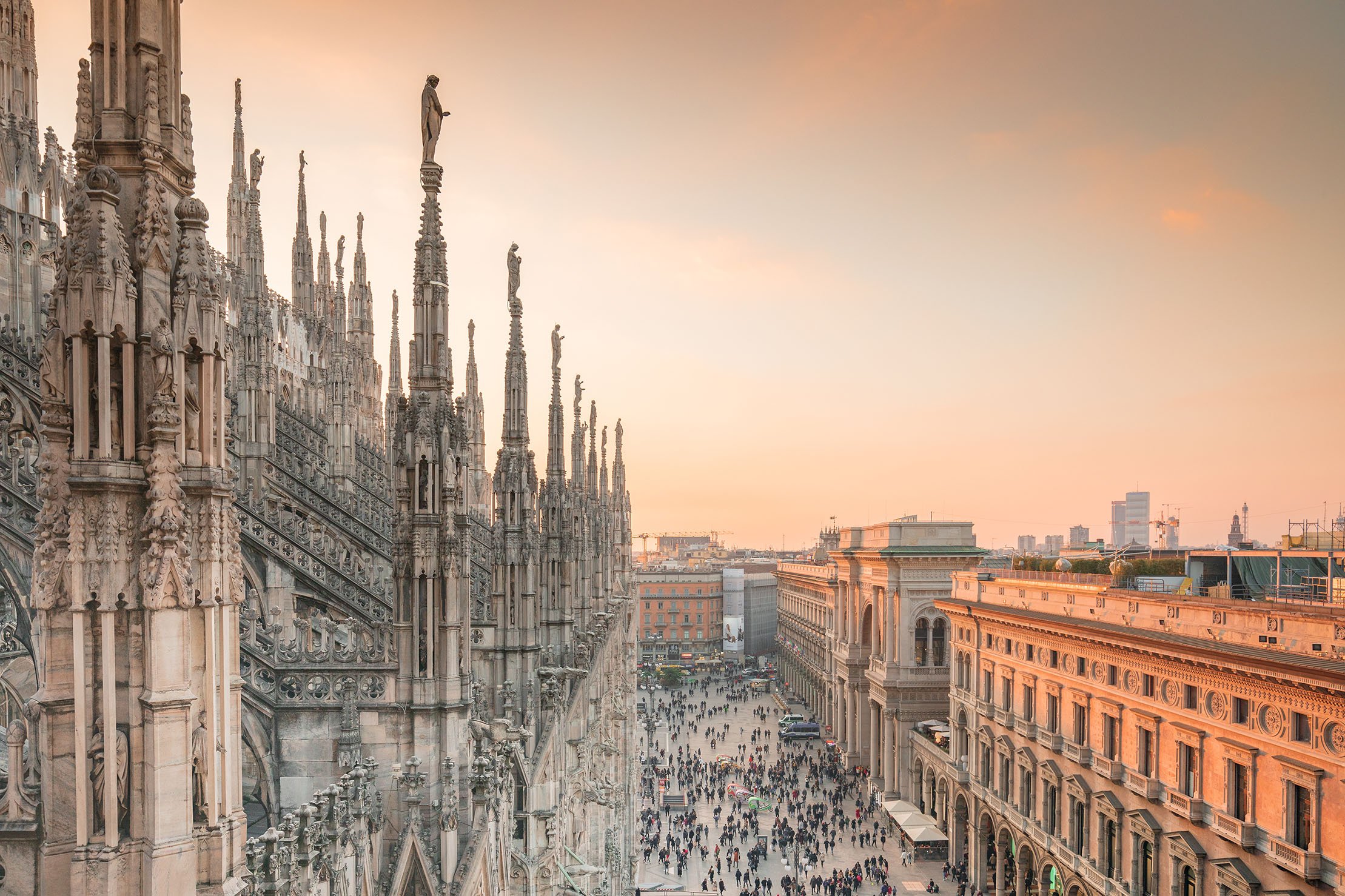“This night we must wait in vigil for our Saviour to rise”
The Easter Vigil is the “mother of all vigils” (St Augustine), because on this night the Church waits in vigil for Christ’s resurrection and celebrates it in the Sacraments.
This celebration represents the central moment of the Easter Triduum and of the entire liturgical year. Despite its similarity to the Roman Rite, the Church of Milan – and especially the liturgy of the Duomo – has maintained a number of particularities. In fact, the Ambrosian Liturgy has reinterpreted the lucernal part of the Vigil in a unique way, provides its own biblical catechesis and has also preserved, similarly to the Holy Thursday Mass “in the Lord’s Supper”, the ancient Eucharistic Canon proper to this night.
The Easter Vigil opens with the liturgy of light: in fact, since the previous day, as a sign of mourning, all the lamps have been extinguished. At the blessed lamp – once coming from the nearby church of San Sepolcro, Milanese memory of the holy places of the Lord’s Passion – the Archbishop lights the great Paschal Candle, placed next to the ambo, while an initial and progressive illumination of the Duomo takes place.
From the pulpit, the Precony is then intoned (the “Exúltet”, from the incipit of the Latin text sung by the deacon), an ancient liturgical hymn that, in the typical formulation of the Ambrosian tradition (also characterized by its own melody), dates back to the 5th century. The Precony, in which the various images of the lamb, the shepherd, the water and the bread find their perfect realization in Jesus risen from the dead, represents in a certain way the “synthesis” of the entire celebration. The Ambrosian text, uniquely interpreting the image of the light coming from the Candle (compared to the “pillar of fire” of the Exodus and the Magi’s guiding “star”), describes Easter night as the night in which “foretellings and prophetic events of several millennia are fulfilled” and presents the Sacraments as a sign of participation in the Lord’s Passover.
During the singing of the Precony, according to the cathedral’s own liturgy, at various moments linked to the hymn text, the lighting of the cathedral lights and altar lamps is completed, drawing precisely from the flame of the Paschal Candle.
From its very beginning, the celebration is characterized by a particular spiritual tension towards the encounter with the risen Lord: “Tonight,” the Exúltet sings, “we must wait in vigil for our Saviour to rise. Let us therefore keep the torches lit as the prudent virgins did; delay could delay the encounter with the coming Lord. Surely he will come, and in the twinkling of an eye, like the sudden lightning that flashes from one end of the sky to the other’.
This is followed by the long biblical catechesis, consisting of nine readings from the two Testaments, in which all the fundamental events of salvation history are retraced, starting from the creation to the resurrection and exaltation of Christ. At the end of the six First Testament readings, the solemn proclamation of the Resurrection resounds. The Archbishop, with miter on his head and crosier, from the three sides of the altar, chants “Christus Dóminus resurréxit!” (Christ the Lord is risen) and immediately the bells – which had remained “tied” at the time of the announcement of the Lord’s death – and the organ are rung, as a sign of celebration. Not the singing of the Gloria then, as happens in the corresponding Roman Rite celebration, but the threefold Announcement of the Resurrection marks the climax of the Ambrosian Easter Vigil. A peculiarity, which presents a strong parallelism with the Byzantine liturgy, borrowed from a very ancient tradition in use in Jerusalem, already in the 5th and 6th centuries.
The third part of the Vigil includes the administration of the Sacraments of Christian Initiation (Baptism, Confirmation, Eucharist). Every year, in the Cathedral, several adult Catechumens receive the Sacraments from the Archbishop on this very night and are clothed in the white robe, a sign of the new life of grace that flows from baptismal regeneration. Almost as if to make visible the image – recalled by the Precony – of the “pillar of fire that shines and guides the redeemed to the waters that give salvation”, the procession of the Catechumens to the Baptismal Font of the Borromean era, located at the entrance to the Cathedral, is led by the Paschal Candle.
With the Eucharistic liturgy, the celebration of the Easter Vigil is concluded and fulfilled. The words of the song at the breaking of the bread (composed by St John Damascene: 650c-750c) summarise well the meaning of our participation in the Easter of the Lord Jesus: “I died with you on the cross, today with you I live again. With you I shared the grave, today with you I rise again. Give me the joy of the kingdom, Christ, my Saviour. Hallelujah, hallelujah”.



